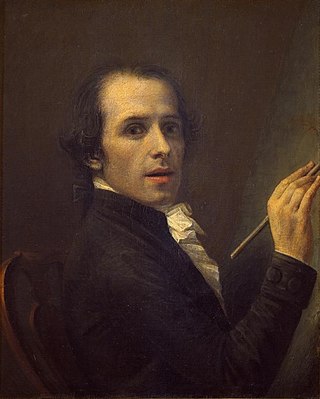
Antonio Canova was an Italian Neoclassical sculptor, famous for his marble sculptures. Often regarded as the greatest of the Neoclassical artists, his sculpture was inspired by the Baroque and the classical revival, and has been characterised as having avoided the melodramatics of the former, and the cold artificiality of the latter.

Joséphine Bonaparte was Empress of the French as the first wife of Emperor Napoleon I from 18 May 1804 until their marriage was annulled on 10 January 1810. As Napoleon's consort, she was also Queen of Italy from 26 May 1805 until the 1810 annulment. She is widely known as Joséphine de Beauharnais.

The Hôtel des Invalides, commonly called Les Invalides, is a complex of buildings in the 7th arrondissement of Paris, France, containing museums and monuments, all relating to the military history of France, as well as a hospital and an Old Soldiers' retirement home, the building's original purpose. The buildings house the Musée de l'Armée, the military museum of the Army of France, the Musée des Plans-Reliefs, and the Musée d'Histoire Contemporaine. The complex also includes the former hospital chapel, now national cathedral of the French military, and the adjacent former Royal Chapel known as the Dôme des Invalides, the tallest church building in Paris at a height of 107 meters. The latter has been converted into a shrine of some of France's leading military figures, most notably the tomb of Napoleon.

Joseph Cardinal Fesch, Prince of the Empire was a French priest and diplomat, who was the maternal half-uncle of Napoleon Bonaparte. In the wake of his nephew, he became Archbishop of Lyon and cardinal. He was also one of the most famous art collectors of his period, remembered for having established the Musée Fesch in Ajaccio, which remains one of the most important Napoleonic collections of art.

Jean-Baptiste Carpeaux was a French sculptor and painter during the Second Empire under Napoleon III.
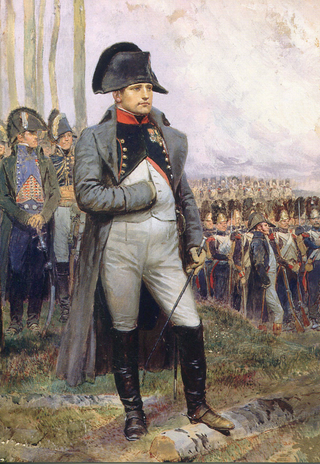
Napoleon I, Emperor of the French, has become a worldwide cultural icon generally associated with tactical brilliance, ambition, and political power. His distinctive features and costume have made him a very recognisable figure in popular culture.

Baron François Joseph Bosio was a Monegasque sculptor who achieved distinction in the first quarter of the nineteenth century with his work for Napoleon and for the restored French monarchy.

A death mask is a likeness of a person's face after their death, usually made by taking a cast or impression from the corpse. Death masks may be mementos of the dead or be used for creation of portraits.

The Emperor's New Clothes is a 2001 historical drama film directed by Alan Taylor and based on the 1992 novel The Death of Napoleon by Simon Leys. The film stars Ian Holm as Napoleon Bonaparte, Iben Hjejle, and Tim McInnerny. The plot revisions the history surrounding Napoleon's exile to Saint Helena following his defeat at the Battle of Waterloo. Although set in Paris, the film was mostly shot in Turin, Italy.

Longwood House is a mansion in St. Helena and the final residence of Napoleon Bonaparte, the former Emperor of the French, during his exile on the island of Saint Helena, from 10 December 1815 until his death on 5 May 1821.
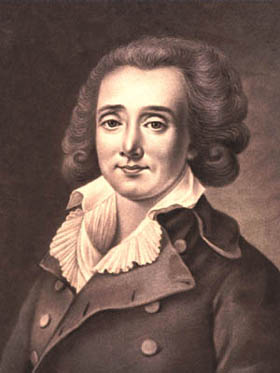
Pierre-Clément de Laussat was a French politician, and the 24th Colonial Governor of Louisiana, the last under French rule. He later served as colonial official in Martinique and French Guiana, as well as an administrator in France and Antwerp.

Napoleon as Mars the Peacemaker is a colossal heroic nude statue by the Italian artist Antonio Canova, of Napoleon I of France in the guise of the Roman god Mars. He holds a gilded Nike or Victory standing on an orb in his right hand and a staff in his left. It was produced between 1802 and 1806 and stands 3.45 metres to the raised left hand. Once on display in the Louvre in Paris, it was purchased from Louis XVIII in 1816 by the British government, which granted it to the Duke of Wellington. It is now on display in Robert Adam's stairwell at the Duke's London residence, Apsley House.
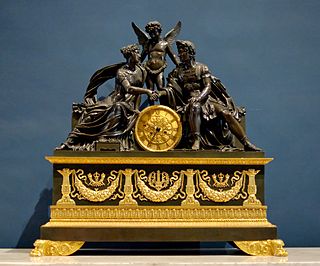
A French Empire-style mantel clock is a type of elaborately decorated mantel clock that was made in France during the Napoleonic Empire (1804–1814/15). Timekeepers manufacturing during the Bourbon Restoration (1814/1815–1830) are also included within this art movement as they share similar subjects, decorative elements, shapes, and style.
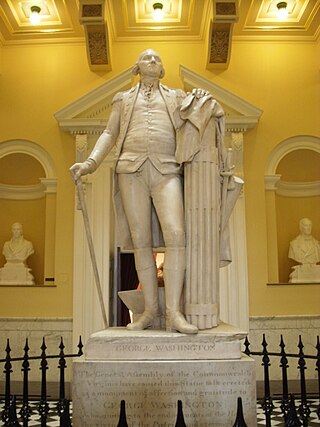
George Washington is a statue by the French sculptor Jean-Antoine Houdon from the late 18th century. Based on a life mask and other measurements of George Washington taken by Houdon, it is considered one of the most accurate depictions of the subject. The original sculpture is located in the rotunda of the Virginia State Capitol in Richmond, Virginia, and it has been copied extensively, with one copy standing in the United States Capitol Rotunda.

Reverend Richard Boys MA was a Church of England clergyman and author, most notable for his tenure as Chaplain on St. Helena at the time of Napoleon Bonaparte's exile there. A controversial figure during his time there, he also played a part in the mystery surrounding Napoleon's death mask.

François Carlo Antommarchi was Napoleon's physician from 1819 to his death in 1821.

The Napoleon Museum in Havana, Cuba houses one of the most important collections from the 18th and 19th centuries preserved in the Western hemisphere. The museum is on San Miguel Street, between Ronda and Mazón, on one side of the University of Havana.
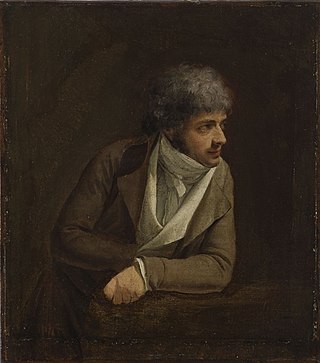
Charles-Louis Corbet was a French sculptor. He is known for a bust that he made of Napoleon and a statue of a French Dragoon on the Arc de Triomphe du Carrousel.

George Washington is a marble bust portrait of George Washington, done in the style of a Roman emperor, by the Italian sculptor Giuseppe Ceracchi. It was created as part of a campaign by Ceracchi to build a larger monument to Washington. The bust was thought by many to be one of the most lifelike. It was later used as a model of Washington for works by other sculptors and engravers.
Louisiana Historical Society, established in 1835, is a historical society in Louisiana charged with documentation and protection of colonial records. According to its website, it is the oldest historical organization in the state.





















